The aim for today was to get the neck ready to go onto the body. I started by shaping the headstock top edge (to mimic the body carve) and drilling for the tuners and ferrules.

Here’s the compact layout.
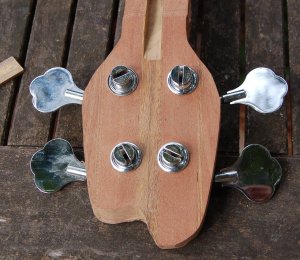

I needed to drill out the machine head slots to be able to accept the thicker strings. After drilling I spent some time with a small round file making sure there were no sharp edges which would damage the polyurethane strings.


Then it was on to the fret markers. I drilled 13mm holes along the top edge.

I had ordered a set of plug cutters but after a couple of hours of trying to get them work I was unable to cut a neat plug of hardwood. Thankfully the eBay seller is going to refund the money, but in the meantime I needed to find a way of making myself some plugs. I cut a square rod of sapele that was 13mm on each side, clamped that down to the bench and ran a 6.5mm roundover bit down each corner. After a bit of sandpaper I was left with a 13mm dowel. Pop through the fretboard and trim to length


I glued in each plug and, while they were drying, I made myself a 5mm dowel of ebony. I couldn’t do this with a router, but with a small block plane I was able to fashion a fairly good approximation from a 5x5mm length of ebony.

I drilled a 5mm hole through the centre of the 12th fret marker and glued in the ebony dowel. After allowing it to dry top and bottom of the fretboard were sanded flat.

Now I had all the key tasks done I was ready to assemble the neck. I drilled two 1.5mm holes through the first and last fret slots, down a couple of mill into the neck. This allows me to pop through a couple of thin pins which stops the fretboard moving as it is clamped down. I mask off the truss rod slot, spread the neck top with two part Araldite epoxy adhesive and gently clamp it up. It doesn’t need to get clamped too tightly otherwise it can force out all of the glue, leaving a weak join.


After an hour I was able to remove the clamps. I used a bottom bearing cutter in the router and trimmed the fretboard to match the neck, neatly bisecting the sapele/ebony markers. Next step was to set about the neck with my radiused sanding block, loaded first with 60 grit, rising to finish with 220 grit. To make sure I sanded the fretboard evenly I shaded the surface with pencil so I could easily see which areas were getting sanded away.


I cut the frets close to length, gently tapped them into the slots and, with my caul mounted in the drill press, gently squeezed them into the slots. This was so much easier and more controlled than hammering them in.
I clamped the edges of the frets and wicked in a drop of CA glue to each fret end.

Once that had dried I filed the fret ends. They still need more work but they’re fairly close.

If the weather allows, tomorrow I’ll be routing the neck pocket, control cavity and drilling the string through holes, hopefully ending the day with a neck glued in to the body.



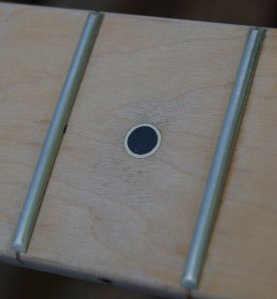
















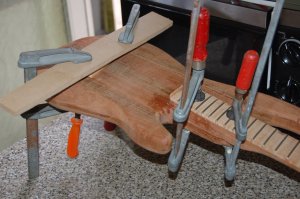



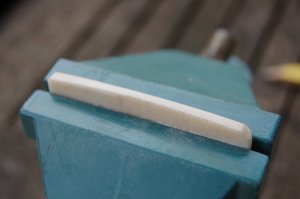

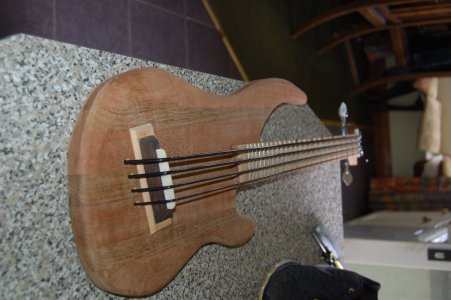







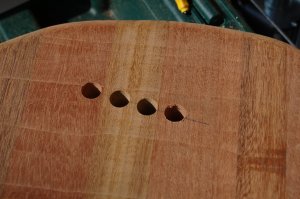
























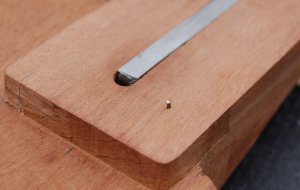










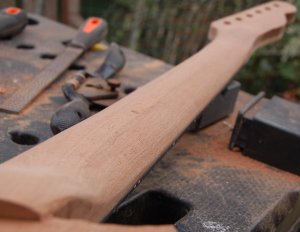





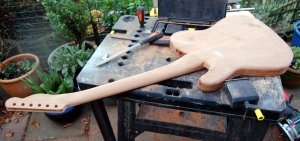





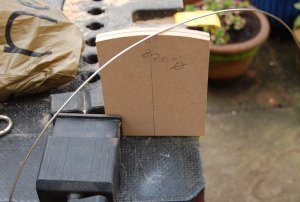







You must be logged in to post a comment.